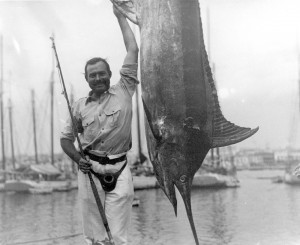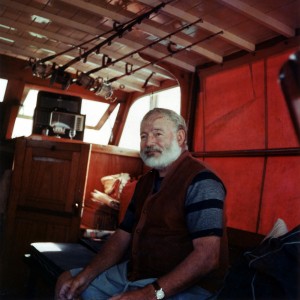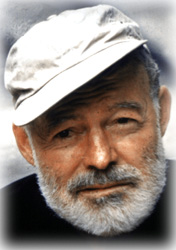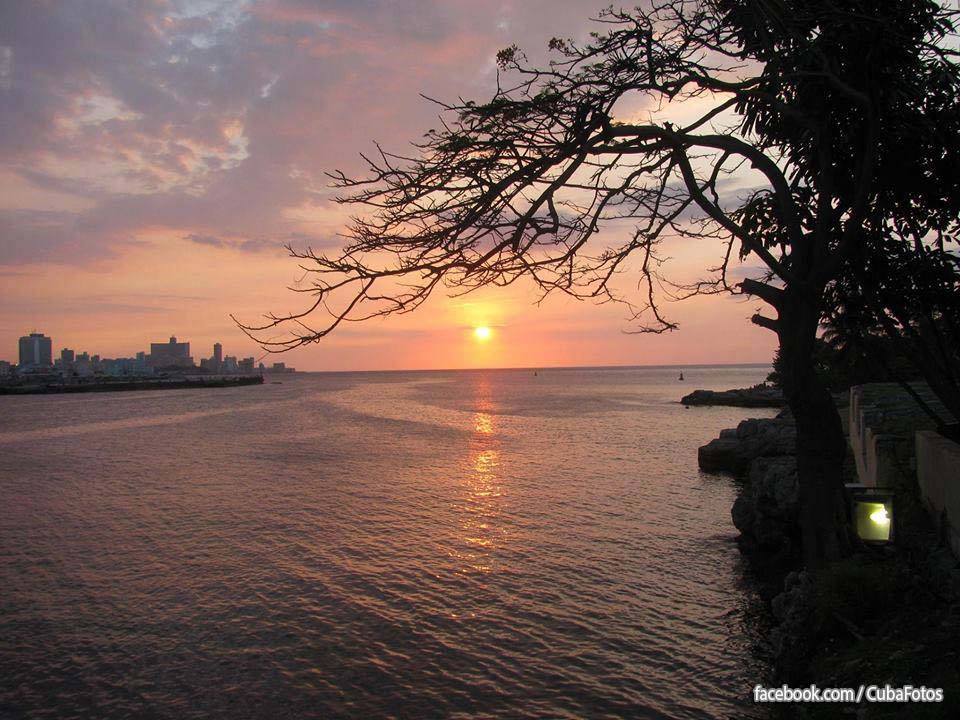 CUBA: LAS HUELLAS QUE ERNEST HEMINGWAY DEJÓ.
CUBA: LAS HUELLAS QUE ERNEST HEMINGWAY DEJÓ.
Adicto a las aventuras fuertes e insaciable bebedor de los afamados daiquirís cubanos, Ernest Hemingway (1899-1961), un ícono de la literatura de Estados Unidos, vivió en Cuba algunos de sus años más productivos en los que sembró amigos y admiradores incondicionales.
El hotel Ambos Mundos, el restaurante-bar El Floridita, la Bodeguita del Medio, la Terraza de Cojimar y la Finca Vigía son hoy lugares emblemáticos para el turismo extranjero y marcan los principales escenarios de lo que podría llamarse “La ruta de Hemigway en Cuba”.
Los cubanos más jóvenes carecen de muchas referencias acerca del autor de “El viejo y el Mar” y otras reconocidas obras cuya impecable prosa periodística novelada le hicieran ganar los codicionados Premio Pulitzer (1953) y Nobel de Literatura (1954).
No obstante, para el fallecido escritor colombiano Gabriel García Márquez, Hemingway estuvo “dentro del alma de Cuba” mucho más de lo que suponían los cubanos de su tiempo, y dejó huellas de su paso “por los sitios menos pensados” de esta nación insular del Caribe.
El historiador Eliades Acosta ha calificado de complicada y fascinante la vida de Hemingway y sostiene que la presencia en Cuba del escritor “resulta ineludible y puede asaltar a cualquiera donde menos lo imagina”.
Es difícil hallar personas de cierta edad que hayan conocido los andares del escritor estadunidense, que vivió más de dos décadas en Cuba y que decía amar a este país y considerarlo “un buen lugar para escribir”.
Sin embargo, Laura Cifuentes, quien labora en una librería de la calle Obispo, a sus 59 años de edad y próxima a jubilarse, conserva al menos en la memoria anécdotas que le contó su abuelo Pablo.
“Mi abuelo, que trabajaba en una farmacia de Obispo (una calle estrecha y adoquinada sembrada en sus tiempos de esplendor de múltiples comercios) a veces lo veía caminando hacia su hotel tras salir de El Floridita.
“En su mano llevaba un vaso envuelto en una servilleta con el último daiquirí, vestido con camisa ligera, pantalón corto y zapatillas o tenis, muy propio para el trópico”, dijo Cifuentes en entrevista con Notimex, recordando lo que le dijo su abuelo.
Cuatro o cinco horas antes, Hemingway había consumido sentado como patriarca en la esquina izquierda de la barra al menos una docena de esta refrescante bebida elaborada con ron blanco, limón, hielo frappe y sin azúcar, como a él le gustaba.
Hemingway viajó a Cuba por primera vez en abril de 1928, acompañado de su segunda esposa, de paso para un viaje marítimo hasta Cayo Hueso, Florida, y regresó en 1932 entusiasmado con la pesca de agujas en aguas cubanas.
Regresó en 1933 y rentó una habitación en el hotel Ambos Mundos, de la calle Obispo, en el centro histórico de La Habana, cerca del puerto y de La Catedral, hasta que alquiló y después compró Finca Vigia, hoy convertida en museo, en las afueras de esta capital.
En ese remanso campestre enclavado en una colina y periférico de la ciudad (lo que le facilitaba incursiones a sus lugares de preferencia), escribió desde 1939 según sus biógrafos “Por quien doblan las campanas” y “El viejo y el mar”, además de cuentos y reportajes.
Expertos cubanos y estadunidenses, a través de un convenio de colaboración, han logrado preservar más de cinco mil 500 documentos inéditos del autor de “Las Nieves del Kilimanjaro” guardados en Cuba.
Guías del Museo explican a visitantes que Hemingway prefería escribir de pie, con zapatillas de andar, primero a mano y luego a máquina, en un luminoso cuarto de Finca Vigía, atestado de papeles, libros, panfletos y notas.
Tal vez el lugar más entrañable para aquel hombre que se quitó la vida con una escopeta en Ketchum, Estados Unidos, el 2 de julio de 1961, fue El Floridita, donde compartió con celebridades internacionales, intelectuales cubanos y a veces con simples ciudadanos de a pie.
“La Terraza”, un restaurante de cocina marinera, que Hemingmay cita en “El viejo y el mar”, se encuentra a unos 10 kilómetros al este del centro de esta capital, en el poblado de pescadores de Cojimar, muchos de los cuales admiran a quien apodaban como Papa.
Daniel Cárdenas, un bartender de esa instalación, nos acompañó en un breve recorrido por “La Terraza”, donde se conserva la mesa en la que solía sentarse, mirando la unión del río con el mar, así como una playita en forma de media luna a los pies del restaurante.
“Todavía preparamos el ranchito de mariscos, que me cuentan era uno de sus platos favoritos”, dijo platicando con Notimex bajo varios retratos enmarcados de Hemingway en faenas de pesca en su yate “Pilar” cuyo patrón, Gregorio Fuentes, era además su cocinero.
La Marina Hemingway, en el oeste de La Habana, organiza cada año el torneo clásico internacional de la pesca de la aguja. En uno de esos eventos el hoy enfermo expresidente Fidel Castro y el eminente escritor estadunidense se conocieron el 15 de mayo de 1960.
Notimex/Agencies/InternetPhotos/www.thecubanhistory.com
The Cuban History, Hollywood.
Arnoldo Varona, Editor.
CUBA: THE FOOTPRINTS ERNEST HEMINGWAY LEFT. .
Addict to the strong adventures and insatiable drinker of the famous Cuban daiquiris, Ernest Hemingway (1899-1961), an icon of American literature, lived in Cuba some of his most productive years in which sowed unconditional friends and admirers adventures.
The Ambos Mundos hotel, restaurant El Floridita bar, the Bodeguita del Medio, the Terrace of Finca Vigia and Cojimar today are emblematic places for foreign tourists and mark the main scenarios of what might be called “The route of Hemingway in Cuba “.
Younger Cubans lack many references about the author of “The Old Man and the Sea” and other well-known fictional works whose impeccable journalistic prose made him win the Pulitzer Nobel Prize for Literature (1954) Award (1953) and codicionados.
However, to the late Colombian writer Gabriel Garcia Marquez, Hemingway was “within the soul of Cuba” much more than they thought Cubans of his time, and left traces of their passage “by the most unlikely places” of this island nation Caribbean.
Eliades Acosta historian has described as complicated and fascinating life of Hemingway and argues that the presence in Cuba of the writer “is unavoidable and can assault anyone where you least imagine.”
It’s hard to find people of a certain age who have known the gait of the American writer, who lived more than two decades in Cuba and saying love this country and consider it “a good place to write.”
However, Laura Cifuentes, who works in a bookstore in Bishop Street, the 59 years old and nearing retirement, at least preserves the memory stories told to him by his grandfather Paul.
“My grandfather, who worked in a pharmacy Obispo (a narrow, cobbled street sown in their heyday multiple stores) sometimes saw him walking to his hotel after leaving El Floridita.
“In his hand was a glass wrapped in a napkin with the ultimate daiquiri, wearing light shirt, short pants and sneakers, very typical for the tropics,” Cifuentes said in an interview with Notimex, remembering what his grandfather told him.
Four or five hours earlier, Hemingway had spent sitting as patriarch in the left corner of the bar at least a dozen of this refreshing drink made with white rum, lime, crushed ice and sugar, as he liked.
Hemingway traveled to Cuba for the first time in April 1928, accompanied by his second wife, passing for a sea voyage to Key West, Florida, and returned in 1932 excited needle fishing in Cuban waters.
He returned in 1933 and rented a room at the Ambos Mundos hotel, of Bishop Street, in the historic center of Havana, near the harbor and the Cathedral, until rented and then bought Finca Vigia, now a museum, in outskirts of this capital.
In this country haven nestled on a hill and peripheral of the city (which made it easier raids to their places of preference), wrote in 1939 according to his biographers, “For Whom the Bell Tolls” and “The Old Man and the Sea”, in addition to stories and reports.
Experts Cubans and Americans, through a collaboration agreement, have managed to preserve more than five thousand 500 unpublished documents from the author of “The Snows of Kilimanjaro” Saved in Cuba.
Museum guides visitors explained that Hemingway preferred to write standing, slippers, first by hand and then typed in a bright room Finca Vigia, crammed with papers, books, pamphlets and notes.
Perhaps the most endearing to the man who killed himself with a shotgun in Ketchum, United States, July 2, 1961, was El Floridita, where he shared with international celebrities, Cuban intellectuals and sometimes simple citizens on foot .
“The Terrace,” a seafood restaurant that Hemingmay quoted in “The Old Man and the Sea”, is situated about 10 kilometers east of the center of the capital, in the fishing village of Cojimar, many of whom admire who was called as Pope.
Daniel Cardenas a bartender for that facility, accompanied us on a brief tour of “La Terraza” where the table that would sit remains looking River Union with the sea and a small beach in crescent at the foot of the restaurant.
“I still prepare the ranch seafood, which feature was me one of his favorite dishes,” he said talking to NOTIMEX under several framed portraits of Hemingway on fishing operations on his yacht “Pilar” whose pattern, Gregorio Fuentes, was also his cook.
The Marina Hemingway in western Havana, organizes the annual International Classic tournament marlin fishing. In one such event today sick president Fidel Castro and the eminent American writer met on May 15, 1960.
NOTIMEX / Agencies / InternetPhotos / www.thecubanhistory.com
The Cuban History, Hollywood.
Arnoldo Varona, Editor.



 CUBA: the footprints Ernest Hemingway Left. (Photos) * * LAS HUELLAS ERNEST HEMINGWAY DEJÓ.
CUBA: the footprints Ernest Hemingway Left. (Photos) * * LAS HUELLAS ERNEST HEMINGWAY DEJÓ.


